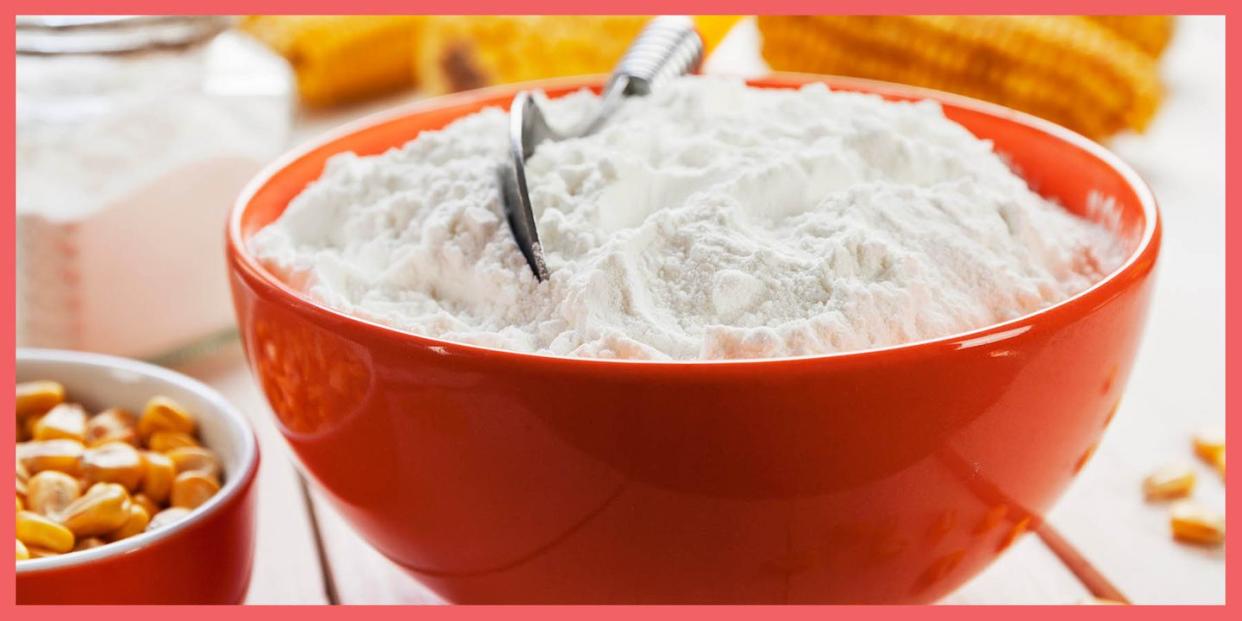6 Cornstarch Substitutes That Work Just Like The Real Thing

Cornstarch is an extremely versatile pantry staple. You can use it to achieve a smooth, sticky sauce when you stir fry, thicken up fruit pie filling, or even make a batch of oobleck.
Also called cornflour, cornstarch is a carbohydrate derived from the endosperm of corn kernels. When you use it in cooking, it undergoes the process of starch gelatinization. To put it simply, the starch absorbs water, expands, and forms a thick gel in the presence of water and heat.
This chemical reaction is often deployed in recipes to improve the texture of the dish. It can thicken, crisp up, or add softness depending on how you use it.
But what do you do if you ran out of cornstarch? Or what if you’re cooking for someone with a corn allergy? Don’t worry, we’ve got you covered.
There are plenty of substitutes for cornstarch that can be easily swapped into any recipe. We have options that you probably already have at home and some that work with any dietary restriction you may have.
Potato Starch
Compared to every other cornstarch substitute, potato starch is the closest dupe to the real thing. You know the white, powdery residue left behind when you chop potatoes? That's the tuber's naturally occurring starch.
Just like cornstarch, potato starch is neutral in flavor and has strong thickening power. In nearly every recipe, you can swap in this product in equal amounts.
Tapioca Starch
Tapioca starch is derived from the root of a cassava plant. It's the same ingredient used to make tapioca pudding and the chewy, bouncy balls of boba in your milk tea. It can be used as a powerful thickening agent in many recipes, but it works slightly differently than cornstarch does.
Tapioca starch can't stand up as well to high temperatures and can leave your food with an odd stringy texture. So if you're planning on boiling your food for prolonged periods of time, save the tapioca starch addition for the end. It's also less potent, which means you'll want to use twice as much when swapping it in for cornstarch.
Wheat Flour
Most households already have all-purpose flour in their kitchens, which makes it an easy swap for cornstarch in many recipes. The natural starches in wheat can be used to thicken soups and sauces. There's a reason every luxurious mac-and-cheese sauce and pot of gumbo starts with flour.
But it's not the same as cornstarch. Unlike the corn-based carbohydrate, wheat flour alters the appearance of what you're cooking and makes liquids opaque. It's also less effective at making fried foods crispy, light, and airy. And, most importantly, it's not safe for gluten-free eaters.
We recommend using wheat flour primarily in soups, stews, and sauces. You should add twice as much flour as you would cornstarch.
Arrowroot Powder
Arrowroot powder is a common, gluten-free additive used to thicken batters and improve texture. This starch is made from a tropical tuber found in Southeast Asia and leaves foods thick, glossy, and translucent.
However, this substitute is much more finicky than cornstarch. It can break down when exposed to high heat for prolonged periods of time. It also does not interact well with dairy products, leaving you with a slimy final product.
Arrowroot powder works best when frying or thickening sauces and fruit fillings. You can use equal amounts in recipes that call for cornstarch.
Sweet Rice Flour
Unlike other substitutes that extract the natural carbohydrates from a starchy source, sweet rice flour is made by grinding whole grains of glutinous rice. Despite its name, it doesn't taste sweet. It's common used in rice noodles and mochi—but it's also a great thickener and substitute in gluten-free baking.
It's important to note that sweet rice flour is different from plain rice flour, which is made from ground medium or long grain rice. Sweet rice has a higher starch content and is much more similar to cornstarch. We recommend using it 1:1 in baked goods, frying batters, and sauces.
Xanthan Gum
Xanthan gum is a thickener made from fermented sugar and is commonly used in many packaged foods, like candy and salad dressings. It's also an essential ingredient in gluten-free flours to replicate the binding power of wheat flour.
A little goes a long way with xanthan gum—think ¼ teaspoon to thicken an entire batch of sauce. Depending on the brand, it could be made with corn-based sugars, so it's not a great substitute if you're cooking for people with corn allergies.
You Might Also Like

